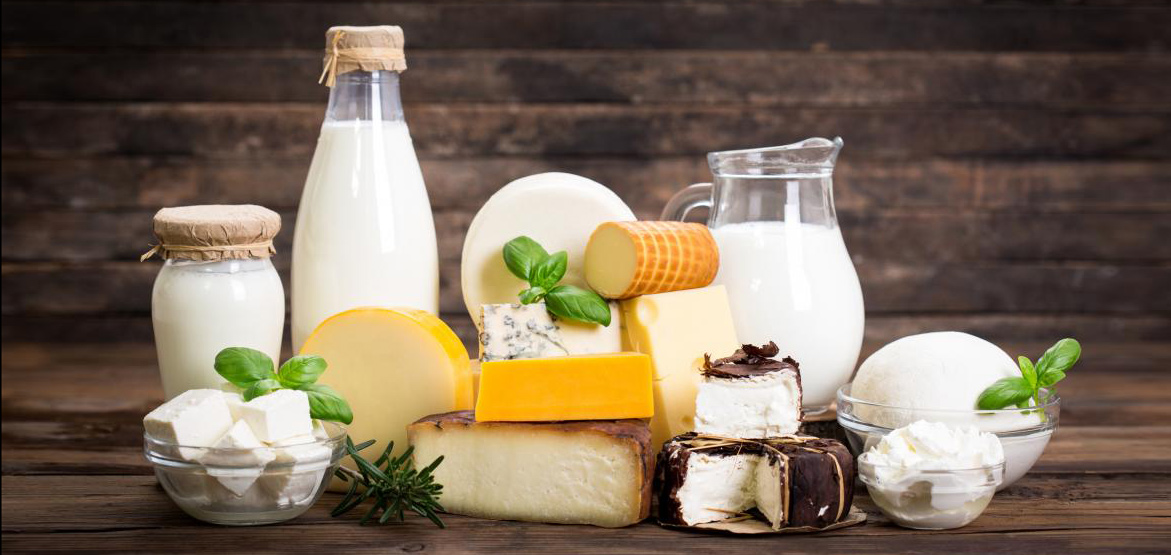Could I have lactose or milk protein intolerance?
23. October, 2019

Lifestyle
Milk allergy should not be confused with lactose intolerance. A food allergy happens when your immune system overreacts to a specific food protein. Unlike food allergies, food intolerances do not involve the immune system.
Lactose Intolerance
People who are lactose intolerant are missing the enzyme lactase. Lactase breaks down lactose, a sugar found in milk and dairy products. As a result, people with lactose intolerance are unable to digest these foods.
Signs and Symptoms
Stomach pain and bloating are common with lactose intolerance. They are caused when bacteria in the colon ferment lactose that the body has left undigested, resulting in excess gas and water. Pain is most often situated around the navel and lower tummy.
Lactose intolerance can cause diarrhea, or an increase in the frequency, liquidity or volume of stool. It occurs when undigested lactose ferments in the colon, producing short-chain fatty acids that increase the amount of water in the gut.
The fermentation of lactose in the colon can lead to increased flatulence, and the extent to which this occurs can vary significantly from person to person. The gas produced from the fermentation of lactose is odorless.
Other reported symptoms include headaches, fatigue, eczema, and muscle and joint pain, but these have not been confirmed as true symptoms. It is important not to confuse lactose intolerance with a milk allergy, which can be fatal.
Treatment
Treatment usually involves avoiding high-lactose foods like milk, though you may still tolerate small amounts.
Lactose-free Milk
Lactose-free milk is a milk product that contains lactase, an enzyme that helps breaks down lactose. You can use lactose-free milk in place of regular milk in any recipe, as it has nearly the same taste, texture and nutrient profile. In lactose-free milk, lactose is broken down into glucose and galactose, two simple sugars that give lactose-free milk a sweeter flavour than regular milk.
Lactose-free milk should be avoided by those with a dairy allergy and individuals following a vegan or dairy-free diet.
What is Cow’s milk protein intolerance?
Cow’s milk protein intolerance is an abnormal response by the body’s immune system to a protein found in cow’s milk, which causes injury to the stomach and intestines. Cow’s milk protein intolerance is not lactose intolerance.
Risk factors for having cow’s milk protein intolerance include having a relative (particularly a first degree relative like a sibling or parent) who has a history of cow’s milk protein intolerance or has an atopic disease or allergic disease. Breastfeeding may protect infants from developing cow’s milk protein intolerance, but sometimes those proteins can be found in breastmilk if mom has ingested cow’s milk herself.
Cow’s milk protein intolerance can be IgE-mediated or non-IgE mediated. Immunoglobulin E is an antibody typically seen in allergic diseases. In IgE-mediated cow’s milk protein intolerance, symptoms can start within 2 hours of drinking cow milk, whereas in non-IgE-mediated cow’s milk protein intolerance, symptoms can happen from 2 days to 1 week after ingestion of cow’s milk.
Signs and Symptoms
Cow’s milk protein intolerance symptoms will usually develop within the first week of starting cow’s milk in their diet. The signs might manifest as a skin rash or eczema, or involve the gut lining tract, such as vomiting, abdominal pain, blood in the stool, mucousy stool, and diarrhea. Prolonged issues in infants could lead to wheezing, irritability and poor growth/failure to thrive.
Diagnosis
History and physical examination are the most helpful investigations in diagnosing cow’s milk protein intolerance. Timing of the symptoms, age of the patient, and symptoms related to feeds are key to diagnosis. There may be microscopic blood in the stool due to damage to the intestines. The diagnosis of cow’s milk protein intolerance is also supported by an improvement in symptoms after the elimination of cow’s milk. Most of the time, blood tests and other invasive studies are not helpful.
Treatment
The main treatment of cow’s milk protein intolerance is to remove cow’s milk protein from the diet. Typically, the diet starts with an extensively hydrolyzed formula which is a formula of broken-down proteins Soy milk/goat’s milk/sheep’s milk are not appropriate alternatives in most children.
If you want to go on a balanced milk-free diet, be sure to consult a nutritionist. A nutritionist will help you to find suitable dairy-free alternatives. It is important to be able to read the information on food packaging to prevent accidental milk from getting in the food. When eating out, it is necessary to ask whether the food you ordered is completely milk-free. It should be understood that the waitress may not understand the term “milk-free” and may only refer to drinking milk. The dairy-free diet excludes all dairy-based foods such as cheese, kefir, buttermilk, yogurt, cream, ice-cream, milk powder, sour cream, cottage cheese, cream cheese, curd, etc.
Written by nutritionist Riin Reimer
https://www.foodallergy.org/life-with-food-allergies/food-allergy-101/milk-allergy-vs-lactose-intolerance
https://www.healthline.com/nutrition/lactose-free-milk#what-it-is
https://www.urmc.rochester.edu/childrens-hospital/gastroenterology/conditions/cow-s-milk-protein-intolerance.aspx
https://www.healthline.com/nutrition/lactose-intolerance-symptoms#section6


